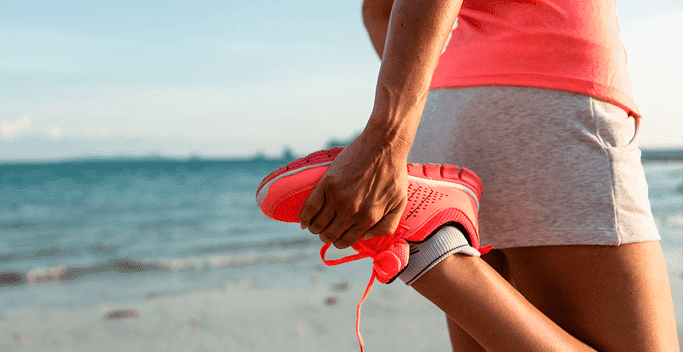August 14, 2023

Heel Today, Rear Tomorrow?: How Achilles Tendinopathy May Affect the Glutes
When you suffer an injury tors and researchers are learning about these kinds of causes and effects.
One lower body affliction is Achilles tendinopathy. Somewhat common in runners, it involves swelling and pain in an Achilles tendon, which connects the calf muscle to the heel. It can sometimes be caused by overtraining.
It’s possible that this affliction has repercussions that travel up tocks.
Consider the results of a study that Medicine & Science in Sports & Exercise ― which is a publication of the American College of Sports Medicine ― released in October 2013. Its authors were a widely respected group of researchers.
This project involved 33 male subjects, all of whom were frequent runners. In that group, 19 men were in good health, and 14 men suffered from Achilles tendinopathy. The leaders of this study observed the following:
● Those who had the tendon condition had a different manner of moving their feet and striking their heels.
● As they ran, that variance caused the gluteus medius and gluteus maximus muscles to get activated later than they would’ve been otherwise.
● Thus, when the tendinopathy was present, the glutes were not as active during runs as they should have been.
These findings raise a couple of major questions:
● Does this type of injury cause the butto become less active?
● Maybe the opposite is true. Did those runners have less active glutes to the issue with their Achilles tendons?
It’s an important matter for experts to an improper style of movement, perhaps at an early age, and no one ever notices the faults in their positioning or footwork. Therefore, coaches and trainers should always be on the lookout for awkward or erroneous form. With correct posture and mechanics, the glutes can be fully engaged during a run.
On the other hand, it could be that this tendinopathy leads toms.
Either way, doctor whenever they’re diagnosing problems with the Achilles tendon.
In the future, medical studies might reveal other connections between sports injuries and muscle dysfunctions. Those discoveries could lead to more accurate diagnoses, improved methods of training, and more effective forms of treatment and rehabilitation.
Dr. Lev Kalika is a world-recognized expert in musculoskeletal medicine. with 20+ years of clinical experience in diagnostic musculoskeletal ultrasonography, rehabilitative sports medicine and conservative orthopedics. In addition to operating his clinical practice in Manhattan, he regularly publishes peer-reviewed research on ultrasound-guided therapies and procedures. He serves as a peer reviewer for Springer Nature.
Dr. Kalika is an esteemed member of multiple professional organizations, including: